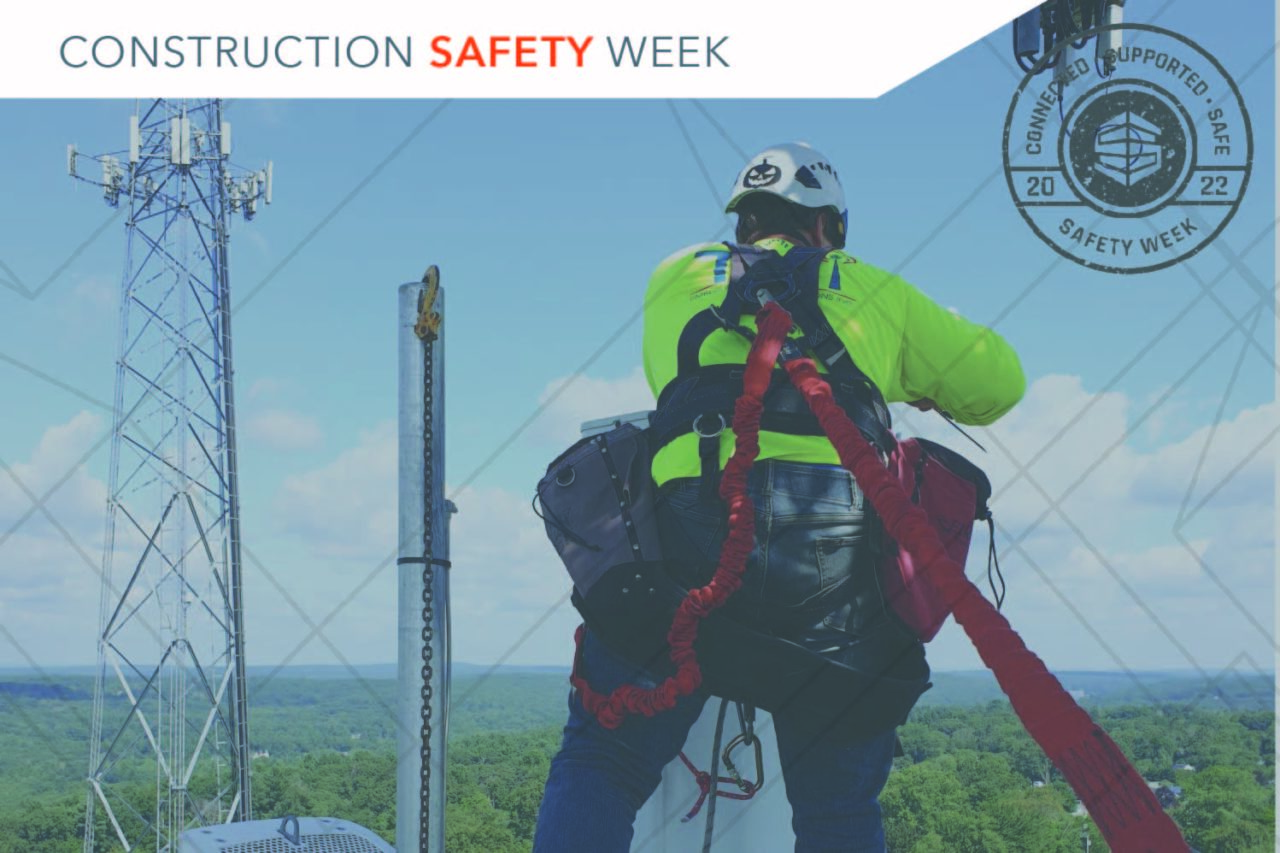
At TCI we are committed to the safety of our employees, clients, subcontractors and the community where each job is performed. It is a core responsibility of our team to identify, reduce and eliminate construction-related injuries so that everyone returns home in one piece. In recognition of Construction Safety Week and OSHA’s National Safety Stand-Down Week, we’re taking a deep dive into the biggest safety concern that tower climbers face – falls. Below are three safety measures that our team implements to keep safe and prevent falls while working at heights.
1. Preparation
Effective preparation serves as a safeguard against the physically and mentally demanding job of tower climbers. We ensure that our employees have safety precautions in place well before ever stepping foot on a tower ladder. Some best practices for climb preparation we implement include:
- Developing a Hazard Analysis and Emergency Action Plan specific to each site
- Inspection of the environment for unsafe conditions
- Completing as much work as possible on the ground before starting the ascent
- Finding the safest most effective path up the tower
2. Proper Personal Protective Equipment (PPE)
Having the right equipment is an essential part of every climb. Each tower job is unique and requires different safety gear depending on the task at hand. Tower height, weather conditions and the type of work being performed all play a factor in what equipment is needed. While it’s important to consult with the National Association of Tower Rectors (NATE) guidelines for each climb, common personal protective equipment includes:
- Hard hats
- Eye protection
- Gloves
- Climbing boots with toe protection
- Work positioning lanyards (fall restraint)
- Full body safety harness
- Shock absorbent lanyards (fall arrest)
- Cable/rope grabs
- 100% tie-off
3. Inspection of Equipment
A fall will happen if equipment fails, so it is imperative to inspect climbing equipment daily before each climb. Additionally, harnesses and lanyards should be regularly checked for:
- Cuts, tears, abrasions or stretching
- Damage due to deterioration
- Distorted hooks, d-rings or faulty closures or locking devices
- Tongues unfitted to the shoulder or buckles
- Loose or damaged mountings
- Non-functioning parts
- Wearing of ropes
Effective preparedness will help to eliminate any unexpected circumstances, which is why each of our TCI employees receives comprehensive training specific to tower climbing aimed at keeping everyone out of harm’s way. In fact, TCI is National Wireless Safety Alliance (NWSA) Certified and is home to one of the longest-standing test facilities in New England, where our staff and technicians from all over the region come to evaluate their skills. We’re proud to be known as one of the safest tower teams in the business and are thankful to our employees for upholding such exceptional safety standards.
